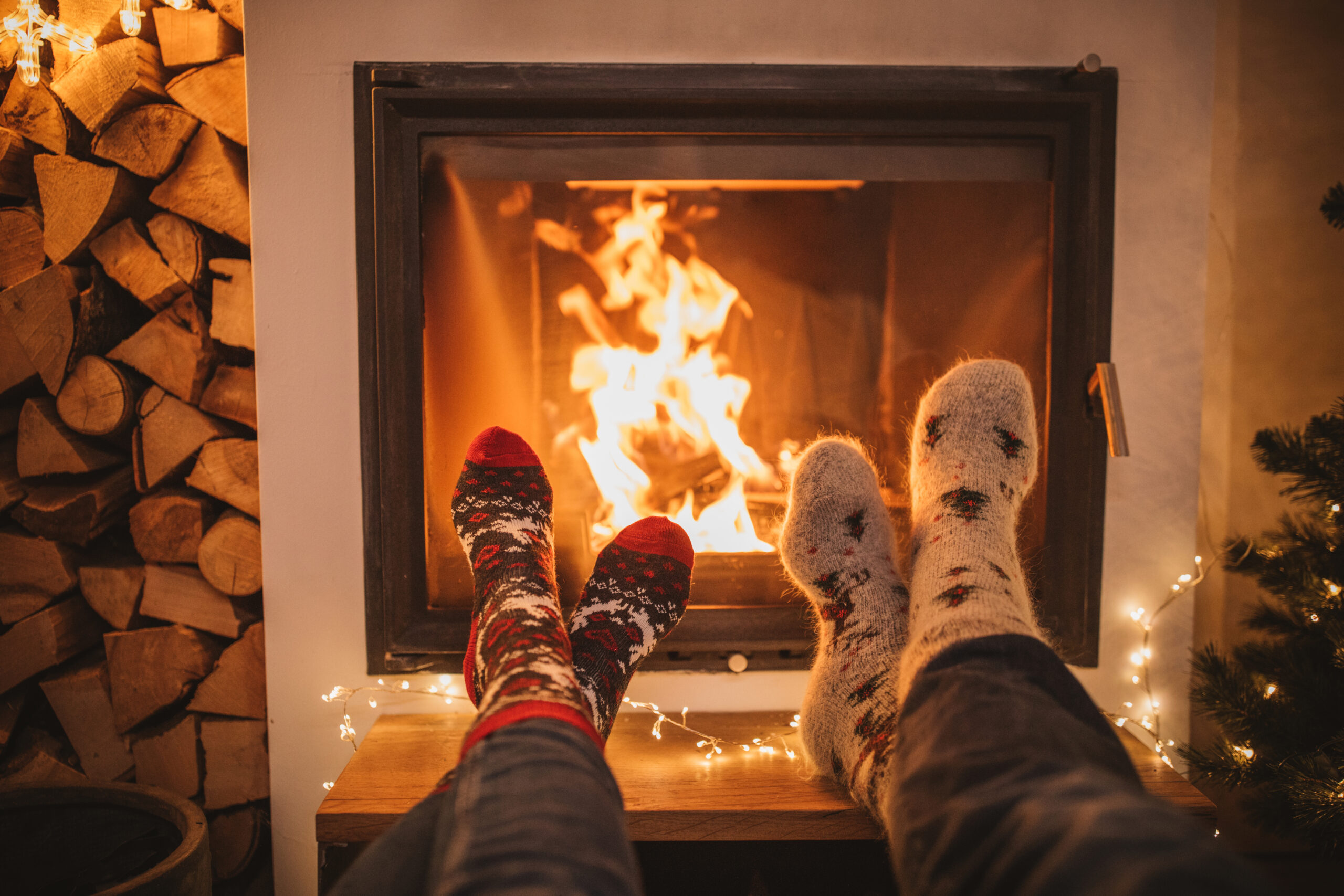
Choosing the best indoor fireplace for your home is about much more than looks. You’ll need to consider fuel type, heat output, smart features, safety and so much more. To help you choose one that meets your needs and preferences, we put together a helpful guide. We recommend using this guide and consulting with a licensed heating technician to achieve the best possible results.
1. Fuel Type
It’s important to choose the correct fuel for your indoor fireplace. Consider how your option will affect the fireplace’s atmosphere, maintenance needs and running costs before making a final decision. Traditional wood-burning fireplaces are cozy but high-maintenance. Clean-burning gas fireplaces are a practical and environmentally friendly option, while modern electric fireplaces are both convenient and cost-effective.
2. Exiting Setup
Your home’s setup will impact whether it can accommodate vented or ventless fireplaces. Vented fireplace systems work well in homes with existing chimneys or flues. These systems need these components to properly vent and expel combustion byproducts. You commonly see them used in traditional, masonry-built homes with functional chimneys. Most heating technicians don’t recommend adding vented systems to homes without a pre-existing venting infrastructure. Adding a vented system can be costly and isn’t feasible in all situations.
Ventless indoor fireplace systems make it possible to burn fuel without needing a chimney. They work best in homes without an existing venting infrastructure and those that don’t have significant air quality concerns. Some regions have specific rules in place regarding the use of ventless fireplaces, making it important to check local building codes before installing one. A licensed heating professional in Normal can help you understand any applicable rules and regulations.
3. Heating Output
How much heat do you need the indoor fireplace to provide? Electric fireplaces work exceptionally well at heating small rooms. Ventless gas fireplaces work extremely well at heating small and medium-sized rooms. Wood-burning and high-output gas fireplaces work best when heating large areas.
4. Safety Features
You should always make safety features a top priority when choosing an indoor fireplace. Look for choices with built-in glass barriers or screens to avoid direct contact with flames. Homeowners with children especially benefit from these fireplaces. To ensure the fireplace will shut off in the event of overheating, look for a system with a shut-off safety feature. If you’re going to install a gas fireplace, make sure it comes with toxic gas sensors. All of these features make your home safer.
5. Energy Efficiency
Many homeowners aim to improve their home’s energy efficiency by installing an indoor fireplace. And while it’s possible to do this, achieving the goal greatly depends on whether you choose the right type of system for your home. Three of the most energy-efficient electric systems include infrared electric, LED electric and energy-efficient electric heat pump fireplaces. Direct-vent gas and condensing gas fireplaces are two of the most energy-efficient gas fireplaces. If you want a wood-burning fireplace, we suggest a high-efficiency EPA-certified wood-burning system or an advanced combustion wood-burning unit.
6. Cost and Budget
Your budget will, of course, impact your indoor fireplace options. For those on really strict budgets, your least inexpensive fireplace options are electric, gel fuel and ethanol systems. Ventless gas fireplaces have a higher initial cost when compared to electric systems, but they are still relatively affordable and efficient. Plus, they work great in homes that don’t have existing venting or chimneys. Some ethanol fireplaces also fall in the middle price range, but it’s important to consider the cost of bioethanol fuel. The most expensive types of indoor fireplaces are direct-vent gas and wood-burning systems. These types require advanced venting systems and professional installation.
7. Smart Features
Today’s modern indoor fireplaces make it simple to improve heating efficiency with smart features. The technologies allow for optimized heat output, remote control, automation and enhanced feedback and monitoring. The top smart features to look for when buying an indoor fireplace are:
- Remote control access
- WiFi connectivity
- Smart home integration
- Thermostat control
There are several advantages to having a licensed heating technician help you choose the best indoor fireplace. A technician can assess your home’s setup, prioritize your heating needs, review various fuel options, explain venting requirements and discuss safety and compliance. Here at Bratcher Heating & Air Conditioning, Inc., our technicians can also help you explore other heating and cooling options, including geothermal heating, boilers and mini-split systems. Contact us now to schedule a fireplace consultation.
